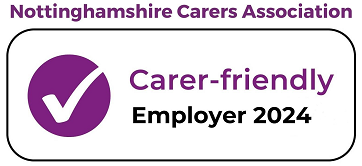Lumbar spine stenosis
Lumbar Spine Stenosis is when the space inside your lower back gets smaller (stenosis means narrowing). This space holds your spinal cord, which is a bundle of nerves. When this space gets smaller, it can cause pain in your lower back and legs. Even though it can hurt, it’s not usually dangerous, and most people’s symptoms get better over time
The symptoms of stenosis can be different for everyone. Besides back pain, you might feel numbness or weakness in your legs. You may also feel wobbly when walking. The pain is worse when you walk or stand for a long time, but it feels better when you sit down or bend forward. You can help yourself by staying active, moving your back, and taking medicine to handle the pain.
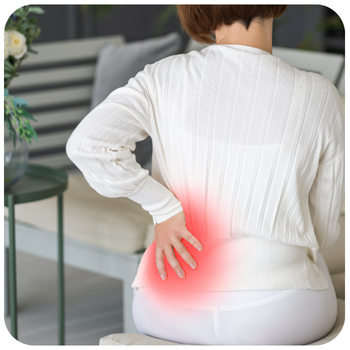
As people get older, their backs change, and this can make the space inside the spine smaller. This is common and happens to a lot of people, especially those over 60. Sometimes, people are born with a narrow spinal canal, which means they have a higher chance of getting spinal stenosis.
Not everyone with a smaller space in their spine will feel pain, and how bad the symptoms are can be different for each person.
When your back pain starts, it's a good idea to do less of what hurts, but you should also try to stay active.
If your symptoms aren’t too bad, you might not need any treatment. Most people can feel better by staying active, changing how they move, and improving their overall fitness. There’s no cure but staying fit and flexible can help. You might need to pace your activities and some people benefit from using a walking pole or stick.
What to avoid
To help manage the condition you might need to modify some activities during the day to avoid:
- Stand for long periods (take breaks etc.)
- Prolonged work involving reaching up above your head.
- Carrying heavy backpacks
Start moving again
Get back to being active slowly. You can do activities you enjoy, like walking, gardening, swimming, cycling, or yoga.
Feeling uncomfortable is normal
At first, moving might feel a bit uncomfortable, but that’s okay. Remember, feeling pain doesn’t always mean you’re hurting yourself. Your back is strong and made to move, so take it step by step.
Painkillers
During a flare up of symptoms medicine can help manage your symptoms allowing you to stay active. Talk to a pharmacist or doctor to find out what medicine is best for you.
However remember Pain medicines are not a cure for back pain and in the long term exercise works better.
Take care of your feelings
Feeling down, tired, or stressed can make your pain worse. Try to get good sleep and talk to friends or family for support.
Need more help?
For more information, read this low back pain booklet (external link) or visit the links at the bottom of the page. You can also refer yourself to the MSK Together physiotherapy service.
In very rare cases, back pain needs immediate attention. Look out for back and leg pain with any of these new signs:
- Loss of feeling: If you feel numb or have pins and needles between your legs.
- Changes around your bottom: If you notice strange feelings around your back passage or buttocks.
- Bladder problems: If you can’t control your bladder, have trouble stopping the flow of urine, or don’t know when your bladder is full.
- Sexual issues: If you have new problems with feeling in the vagina or trouble with erections or ejaculation.
If you have any of these symptoms, contact your doctor or NHS 111 right away, or go to the Emergency Department.
Doctors figure out if you have lumbar spine stenosis by listening to your symptoms and examining your back. Sometimes, an MRI scan might be needed to get a better look at your spine, if you are thinking about surgery or other treatments.
However for most people (in fact 95% of people) with neck or back pain, scans are not needed and can cause more worry and anxiety which may negatively affect your recovery. We also know many of the changes seen on an MRI will often be seen in people without back pain.
For more information about a spinal MRI and the results report, visit the NHS England website (external link).
These are some examples of basic exercises that you may wish to try. Begin with a small number of repetitions, perhaps 5 to 10 of each exercise and build this up gradually. It is okay to feel a stretch in your spine while doing them.
Seated Spinal flexion
Sit at the edge of a chair and bend forward at the hips towards the floor to stretch the lower back. Progress by sliding your hands towards your ankles.
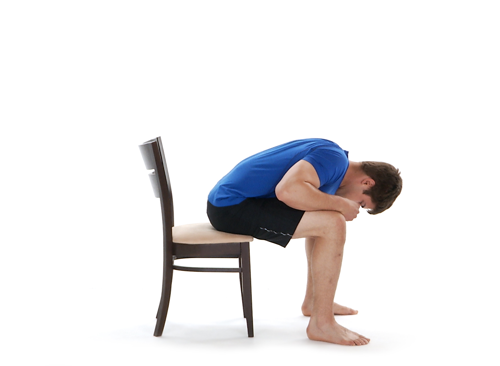
Knee Hugs
Lie on your back and bring one or both knees up towards your chest. Hold the position for 5 to 10 seconds as tolerated.
Feel the stretch in your buttock and low back and repeat on the other leg. If this is difficult use a towel under your thigh and assist with your arms.
Knee rolls
Lie on your back with your knees bent and your feet on the bed.
Keeping your knees together slowly lower your legs to one side until you feel a gentle stretch.
Return to the central position and repeat.
Hold the position for 5 to 10 seconds as tolerated. Release and repeat 5 to 10 times.
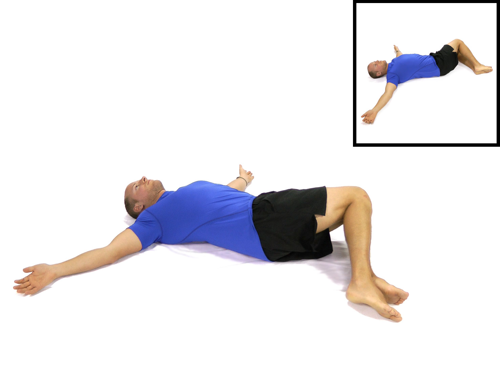
Pelvic tilts
Lie on your back with your knees bent.
Tilt your pelvis and flatten your back to the ground.
Hold the position for 5 to 10 seconds as tolerated.
Return slowly to the initial position and then repeat 5 to 10 times as tolerated.
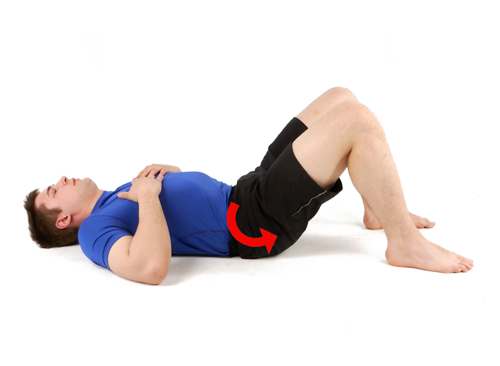
Squats
Stand with both feet hip width apart and facing forward. Hold onto the back of a chair or worksurface for support if needed.
Slowly lower your body into a squat position keeping your back straight and your knee caps aligned with your second toes.
Push through your heels and activate your glutes to come back to standing, repeat 8 to 12 times.
Add weight in gradually as comfortable.
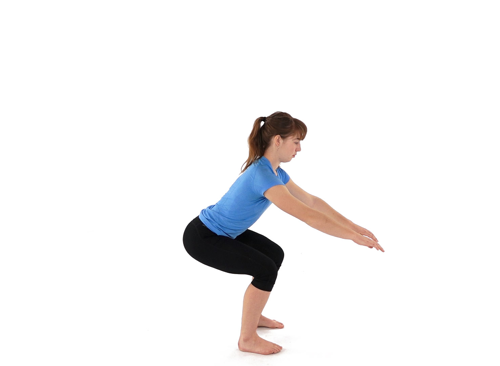
You can’t always prevent low back pain, just like you can’t always avoid catching a cold.
However, what’s really important for keeping your back and body healthy is:
- Keeping moving (exploring movement with varied activity and avoiding being in one position for too long)
- Keeping a healthy weight
- Getting good sleep
- Managing stress
- Quitting smoking
- Drinking less alcohol
- Staying active.
Being active helps you avoid long-term pain and serious health problems like diabetes, cancer, and heart disease. It also helps you live a longer, healthier life. Just like lifting weights makes your muscles strong, moving and exercising your back makes it stronger and healthier. Start slowly and keep practicing to safely do things like bending and lifting.
Getting help for better health
Get free local help for from Your Health Notts (external link) to:
- Improve your fitness.
- Lose weight.
- Stop smoking.
- Reduce our alcohol intake.
Help with exercise
If you need help with exercise, ask your doctor about the GP Exercise Referral Schemes. These offer discounted classes at local leisure centres:
Useful links

Information in this section is intended to be used as a guide. It gives you an idea about how low back pain can be managed. However, you should remember that every case is different, and symptoms and management can vary from person to person.




